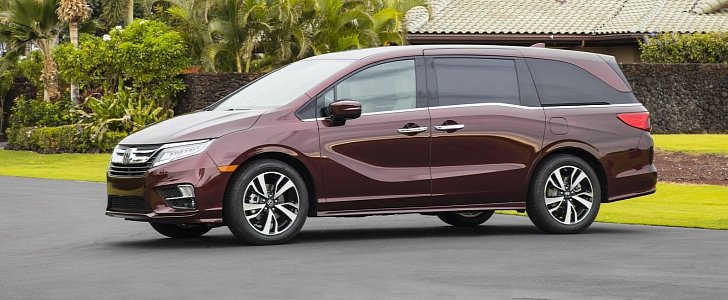As Honda prepares to electrify two-thirds of its models by 2030, word has it the Japanese automaker has taken a liking to what Chrysler did to the Pacifica. More to the point, word has it the Odyssey minivan will rock down to hybridization avenue at some point in the future.
Until the automotive industry is ready to adopt all-electric vehicles on a grand scale, hybridization and mild hybrids are the way to go for the time being. Even in a segment as dreary as the people carrier, a few miles per gallon here and there can make a potentially huge difference both in the customer’s pocket and the automaker’s coffer.
It’s a long and bumpy road ahead, though, especially for Honda. To the point, only 5 percent of the company’s sales in 2016 were electrified models. “The electrification initiative is definitely coming, but on which products and which timing is not 100% clear yet,” commented Tom Sladek, principal engineer at Honda R&D Americas.
Speaking to WardsAuto during a media event of the 2018 Odyssey, the official let it slip that the hybrid powertrain of the Acura MDX “could be considered in the future,” but Honda “can’t comment on particular plans” at the present moment. Reading between the lines, however, reveals that Honda can surely make a case for hybridizing the Odyssey, be it a regular hybrid or the PHEV variety.
The signs are there, to be frank. Not only does Honda and Acura have the NSX hybrid supercar as their halo model, but the Japanese company is pulling a Hyundai Ioniq with the Clarity. Available in three flavors (Fuel Cell, Hybrid, and Electric), the Clarity is but a stepping stone in the automaker’s undertakings for the near future.
What every automaker active in the United States is afraid of, however, is the 2025 CAFE fleet target. More specifically, the industry is preparing for an average of 54.5 miles per gallon (4.3 liters per 100 kilometers). By comparison, the agreed standards for the 2017 model year are 44 mpg for passengers cars and 36 mpg for light-duty trucks.
It’s a long and bumpy road ahead, though, especially for Honda. To the point, only 5 percent of the company’s sales in 2016 were electrified models. “The electrification initiative is definitely coming, but on which products and which timing is not 100% clear yet,” commented Tom Sladek, principal engineer at Honda R&D Americas.
Speaking to WardsAuto during a media event of the 2018 Odyssey, the official let it slip that the hybrid powertrain of the Acura MDX “could be considered in the future,” but Honda “can’t comment on particular plans” at the present moment. Reading between the lines, however, reveals that Honda can surely make a case for hybridizing the Odyssey, be it a regular hybrid or the PHEV variety.
The signs are there, to be frank. Not only does Honda and Acura have the NSX hybrid supercar as their halo model, but the Japanese company is pulling a Hyundai Ioniq with the Clarity. Available in three flavors (Fuel Cell, Hybrid, and Electric), the Clarity is but a stepping stone in the automaker’s undertakings for the near future.
What every automaker active in the United States is afraid of, however, is the 2025 CAFE fleet target. More specifically, the industry is preparing for an average of 54.5 miles per gallon (4.3 liters per 100 kilometers). By comparison, the agreed standards for the 2017 model year are 44 mpg for passengers cars and 36 mpg for light-duty trucks.














